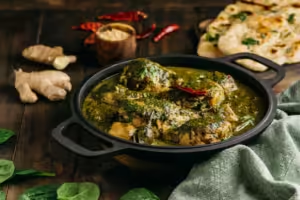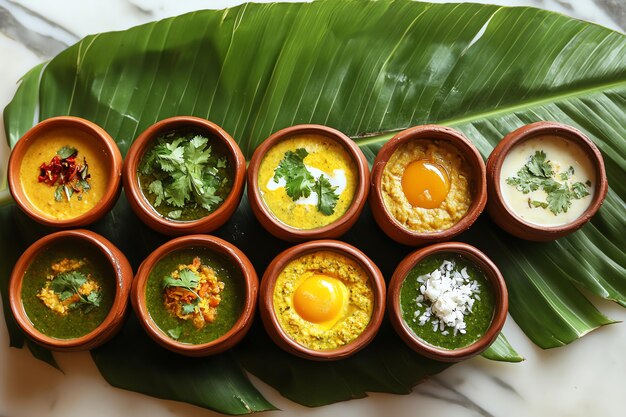Curry leaves are an essential part of Indian cuisine, especially prominent in South Indian cooking. Known for their aromatic flavor and versatility, curry leaves add a distinct taste to a variety of dishes, from curries and dals to chutneys and rice preparations. While often mistaken for curry powder, curry leaves are a standalone ingredient that is cherished in Indian kitchens for their unique aroma and subtle taste.
In this article, we will explore the role of curry leaves in Indian cuisine, their health benefits, popular recipes that incorporate them, and ways to grow and store these flavorful leaves. Curry leaves hold a significant place in both traditional and modern Indian cooking, making them a staple ingredient that enhances the overall culinary experience.
The Importance of Curry Leaves in Indian Cooking
Curry leaves, known as Murraya koenigii botanically, are more than just a flavoring ingredient. In Indian households, they are revered for their medicinal properties and culinary applications. While their primary function is to impart a unique aroma to food, they are also packed with nutrients, including iron, calcium, and vitamins A, B, C, and E.
The subtle taste of curry leaves complements many spiced Indian dishes, adding a fresh, herbal flavor that enhances curries, chutneys, and even rice dishes. Their slightly citrusy flavor also balances out rich, spicy flavors, making them a perfect addition to many recipes.
Health Benefits of Curry Leaves

Curry leaves aren’t just about flavor; they also offer a wide array of health benefits. Here are some reasons why curry leaves are often considered a natural remedy in Indian households:
- Rich in Antioxidants
Curry leaves contain antioxidants that help protect the body from oxidative stress, reduce inflammation, and support overall health. - Aids in Digestion
Known for their digestive properties, curry leaves can help alleviate indigestion, bloating, and nausea. They are also used in natural remedies for an upset stomach. - Promotes Hair Health
In Indian culture, curry leaves are used as a traditional remedy for hair growth. They are rich in nutrients that promote healthy hair and reduce premature graying. - Supports Heart Health
Curry leaves can help reduce cholesterol levels and control blood pressure, making them beneficial for cardiovascular health. - Diabetes Management
Studies suggest that curry leaves may help regulate blood sugar levels, making them beneficial for individuals with diabetes.
Popular Indian Dishes Featuring Curry Leaves
Curry leaves are a star ingredient in many South Indian dishes and can be found in several regional specialties. Here are some popular dishes that showcase the flavor of curry leaves:
- Sambar
A staple in South Indian households, Sambar is a lentil-based vegetable stew seasoned with a variety of spices, including curry leaves. They add an earthy, herbal flavor to the dish, balancing the heat of the spices. - Rasam
This tangy and spicy soup-like dish uses curry leaves for aroma and flavor. Rasam is typically served with rice and is known for its digestive benefits. - Curry Leaf Rice (Karivepaku Annam)
In this flavorful rice dish, curry leaves are blended with spices and rice, creating a vibrant green rice that’s aromatic and delicious. - Coconut Chutney with Curry Leaves
A favorite side dish for South Indian breakfasts, coconut chutney is made with freshly grated coconut, green chilies, and curry leaves, which enhance the flavor of the chutney. - Fish Fry
Curry leaves are often used in marinades for seafood dishes. They add a unique flavor to fish fry recipes, enhancing the dish’s overall taste.
Curry Leaf Powder: A Flavorful Spice Blend
For those who love the flavor of curry leaves but may not have fresh leaves on hand, curry leaf powder is a convenient alternative. Made by drying and grinding curry leaves, this powder can be added to a variety of dishes, such as curries, stir-fries, and chutneys, for an extra layer of flavor. Curry leaf powder retains much of the nutritional and flavor profile of fresh curry leaves, making it a handy addition to any pantry.
Growing Curry Leaves at Home
Curry leaves are relatively easy to grow at home, especially in warm climates. Here’s how to cultivate your own curry leaf plant:
- Select the Right Soil
Curry leaf plants thrive in well-drained soil with plenty of organic matter. Use a potting mix that retains moisture but drains well to avoid root rot. - Provide Ample Sunlight
These plants love sunlight, so place them in a spot where they receive at least 6-8 hours of sun each day. - Water Regularly
Water the plant moderately, allowing the soil to dry slightly between waterings. Curry leaf plants don’t require frequent watering once established. - Use Organic Fertilizers
Fertilize the plant with organic compost or well-balanced fertilizers once a month to promote healthy growth. - Pruning
Pruning the plant encourages bushy growth and helps maintain the plant’s shape. Trim the leaves regularly to stimulate new growth.
How to Store Curry Leaves
To retain their freshness, curry leaves can be stored in a variety of ways. Here are a few methods:
- Refrigeration: Place fresh curry leaves in an airtight container or zip-lock bag and refrigerate. They will keep fresh for up to two weeks.
- Drying: For long-term storage, dry the leaves in a shaded area. Once they are fully dry, store them in an airtight container.
- Freezing: You can also freeze curry leaves. Place them in a zip-lock bag and freeze, ensuring they retain their color and flavor.
Curry Leaves in Modern Indian Cuisine
In recent years, curry leaves have found their way into modern Indian and fusion cuisine. Chefs are incorporating curry leaves in innovative ways, creating dishes that blend traditional flavors with contemporary techniques. Curry leaves are used in everything from sauces and marinades to infused oils and even cocktails, showcasing the adaptability of this herb in both Indian and international kitchens.
Cooking Tips for Using Curry Leaves
To get the most out of curry leaves in your cooking, here are a few tips:
- Tempering Curry Leaves
Curry leaves are often tempered in hot oil to release their full aroma and flavor. This method is commonly used in South Indian cooking. - Adding at the Right Time
Add curry leaves at the beginning of cooking to infuse the oil with their flavor, or toward the end for a more intense taste. - Use in Garnishes
Curry leaves can be used as a garnish for a finishing touch, especially in soups, stews, and rice dishes.
Conclusion
Curry leaves hold a significant place in Indian cuisine, particularly in the kitchens of South India. They are not only cherished for their unique flavor and aroma but also revered for their health benefits. From adding a subtle herbal note to enhancing the complexity of spices, curry leaves elevate many traditional Indian dishes.


